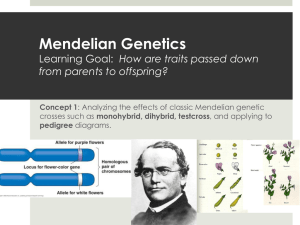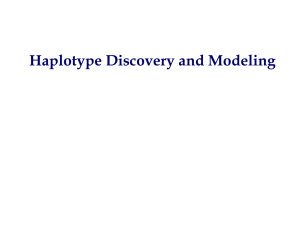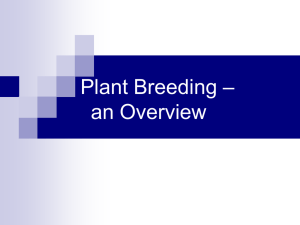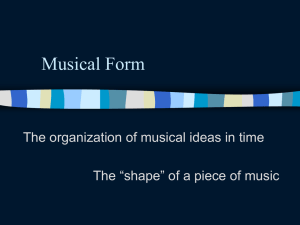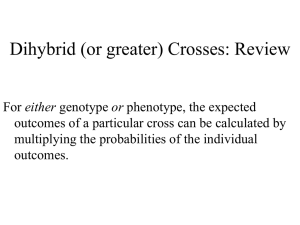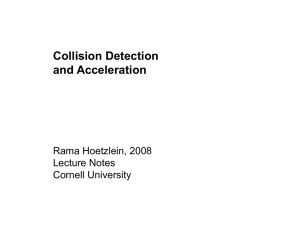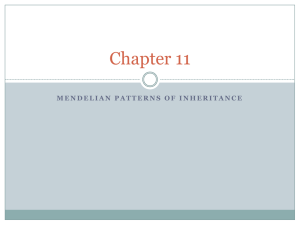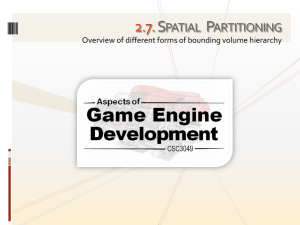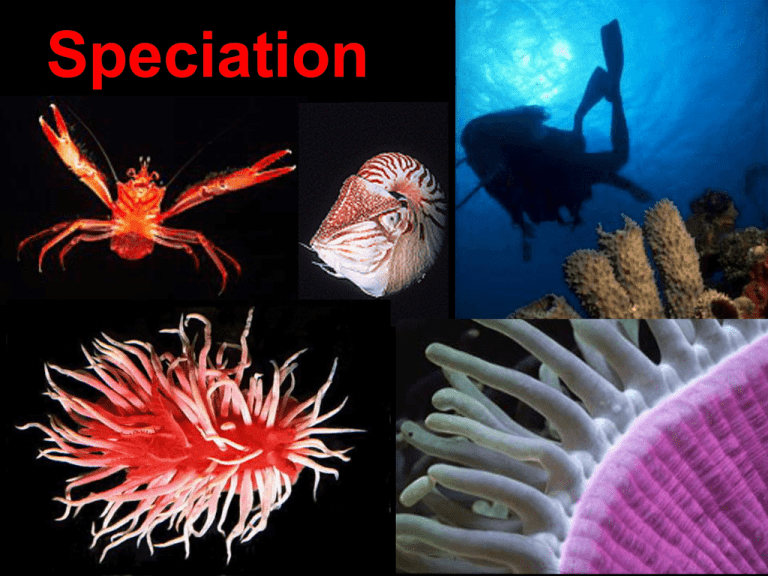
Speciation
Darwin’s Origin of Species did not
actually discuss the origins of species,
but rather mechanisms of natural
selection. So, how does one go from
evolutionary mechanisms within
populations to the creation of entirely
new species (i.e. speciation)?
Mechanisms of Speciation
So…
How can microevolutionary processes of Genetic
Drift, Natural Selection, Mutations, etc. lead to
more macroevolutionary processes such as the
formation of new species?
This gap in understanding was addressed
somewhat during the Evolutionary Synthesis
Some Key Tenets of the Modern Synthesis
Populations are the units of Evolution
Mendel vs Darwin: Continuous traits are also coded by
particulate genes, but many genes
Mutation vs Selection: Mutations are sources of genetic
variation upon which Selection acts
Natural Selection and Mutation are not the only
evolutionary forces. Example: Genetic Drift, Recombination
Microevolutionary processes, such as Drift, Selection,
Mutation, lead to Macroevolutionary changes (such as
speciation)
Although, at the time of the Evolutionary
Synthesis, the genetic mechanisms of
speciation were not well understood
Common Mechanisms of
“Speciation” in different taxa
Animals: Outbreeding depression, breakdown of coadapted gene complexes (Dobzhansky-Müller
incompatibilities) Reproductive Isolation
Plants: Polyploidization
Prokaryotes: Horizontal Gene Transfer
but, it’s hard to define what “speciation” is for a
prokaryote
Mechanisms of Speciation
(1) This Lecture: Genetic Models:
How do Genetic Drift, Natural Selection,
Mutations, etc. create new species?
Are there “speciation” genes?
(2) Next Lecture: Geographic Models:
How does speciation occur in Nature?
Is geographic isolation required?
Mechanisms of Speciation
(1) Genetic Models:
(Book doesn’t discuss sufficiently, but
important)
The roles of: Mutations
Natural Selection
Genetic Drift
The interaction between these three
evolutionary mechanisms could cause two
populations to become two different species
Today’s OUTLINE:
Focusing on Genetic Mechanisms
of Speciation:
Dobzhansky-Müller incompatibilities
Common mechanisms in plants:
Polyploidization
Genetic Model of Speciation:
Dobzhansky-Müller Incompatibilities
Covered in 16.3 in your book (Freeman & Herron) but with the details glossed over
How population genetic processes lead to
speciation
The link between microevolution and
macroevolution
This model of speciation applies only to
sexual species
Speciation: the process by which populations
become different species
Microevolution: results from evolutionary
mechanisms (mutation, drift, selection, etc)
acting within a population
Macroevolution: refers to evolutionary
change above the species level
Genetic Model of Speciation:
Dobzhansky-Müller Incompatibilities
Reproductive isolation occurs as a byproduct of genetic
divergence between two populations
Mutations accumulate in each population
These mutations become fixed by selection or genetic drift in
each population
While the mutations are functional on their normal genetic
backgrounds, they don’t work well together when they are
brought together in hybrids (negative epistasis)
Causing failure to mate or hybrid sterility or inviability (“hybrid
breakdown”)
As ancestral populations diverge, each
lineage evolves independent substitutions
that are not detrimental in their native
genomic contexts.
However, because the derived alleles have
never been tested together, they can cause
genetic incompatibilities when combined in a
hybrid.
A population with two loci
AABB
AABB
AABB
AABB
AABB
AABB
AABB
The population becomes divided and
geographically separated (allopatric)
AABB
AABB
AABB
AABB
AABB
AABB
AABB
The population becomes divided and
geographically separated (allopatric)
New mutation
AABb
AaBB
AaBB
AABB
AABB
New mutation
AABb
AABB
Natural Selection and Speciation
Selection favors different alleles in each
population
New mutation
AABb
AaBB
AaBB
AABB
AABB
A different New mutation
AABb
AABB
Natural Selection and Speciation
The different alleles become fixed in each
population
AAbb
aaBB
aaBB
aaBB
aaBB
AAbb
AAbb
AAbb
Natural Selection and Speciation
The different alleles become fixed in each
population
AAbb
aaBB
aaBB
aaBB
aaBB
AAbb
AAbb
AAbb
Natural Selection and Speciation
In some cases, these new fixed alleles will
not function with loci in the other genetic
background
AAbb
aaBB
aaBB
aaBB
aaBB
AAbb
AAbb
AAbb
Natural Selection and Speciation
Some Hybrids will be inviable at the F1 or F2
generation
aabb
AAbb
aaBB
aaBB
aaBB
aaBB
AAbb
AAbb
AAbb
Natural Selection and Speciation
Across multiple loci across the genome,
such incompabilities will lead to inviability
of hybrids
aabb
AAbb
aaBB
aaBB
aaBB
aaBB
AAbb
AAbb
AAbb
Crossing between two divergent populations
Case 1: At loci where the alleles are codominant
If a and b are alleles that are incompatible
Parents: aaBB x AAbb
F1: AaBb x AaBb
Hybrid breakdown will proceed much more quickly in
this case… as the incompatible alleles will both be
expressed
F1 inviability could also occur at sex chromosomes
more readily
Crossing between two divergent populations
Case 2: At loci where there is Dominance, the
mutation is usually recessive
If a and b are alleles that are incompatible
Parents: aaBB x AAbb
F1: AaBb x AaBb
F2 (different combos, numbers not indicated): AABB,
AaBB, aaBB, AABb, AaBb, aaBb, AAbb, Aabb, aabb
Hybrid breakdown most commonly appears at the F2
generation because dominance typically masks
deleterious alleles at the F1 generation
Crossing between two divergent populations
Case 2: At loci where there is Dominance
Parents: aaBB x AAbb
F1: AaBb x AaBb
F2 (different combos, numbers not indicated):
AABB, AaBB, aaBB, AABb, AaBb, aaBb, AAbb,
Aabb, aabb
At any one locus, only a fraction of the hybrids
are likely to show deleterious effects
Crossing between two divergent populations
Case 2: At loci where there is Dominance
Parents: aaBB x AAbb
F1: AaBb x AaBb
F2 (different combos, numbers not indicated):
AABB, AaBB, aaBB, AABb, AaBb, aaBb, AAbb,
Aabb, aabb
However, with sufficient levels of divergence
between the populations, many many loci across
the entire genome are likely to show effects of
breakdown of coadapted gene complexes
Crossing between two divergent populations
Case 2: At loci where there is Dominance
Parents: aaBB x AAbb
F1: AaBb x AaBb
F2 (different combos, numbers not indicated):
AABB, AaBB, aaBB, AABb, AaBb, aaBb, AAbb,
Aabb, aabb
In crosses between divergent populations, any
given F2 hybrid is likely to have a fraction of their
loci having a maladaptive allelic combination (like
aabb, above)
Crossing between two divergent populations
Case 2: At loci where there is Dominance
Parents: aaBB x AAbb
F1: AaBb x AaBb
F2 (different combos, numbers not indicated): AABB,
AaBB, aaBB, AABb, AaBb, aaBb, AAbb, Aabb, aabb
If you sum across the entire genome, many many
individuals will show F2 hybrid breakdown across some
of their loci.
So, you will see many inviable F2 offspring in divergent
populations
Genetic Models
Genetic Drift and Speciation
Genetic drift can work the same way, but often
takes longer (even weak selection can speed rate of
speciation; Gavrilets 2000)
Random drift of genes in each population can
lead to incompatibilities
So far, evidence suggests that speciation occurs
more readily through selection on different
populations than through genetic drift.
So, eventually the two populations can no longer
come together (due to hybrid breakdown) and they
become different species
Speciation could happen gradually in that some
genes might become more diverged and unable to
function in the genetic background of the other
population more quickly than others
So, during the process of speciation, some hybrid
individuals might by chance be more viable than
others, depending on the combination of alleles that
the individual happens to have
Speciation through
Polyploidization
Example: Dandelion, Eurasian origin
Diploid, triploid, tetraploid populations
North American invasive populations are triploid and
sterile, reproduce asexually
Taraxacum officinale
Speciation through
Polyploidization
Freeman & Herron, pp. 615616, but with more
mechanism presented here
Example: Dandelion, Eurasian origin
Diploid, triploid, tetraploid populations
North American invasive populations are triploid and
sterile, reproduce asexually
Taraxacum officinale
Polyploidy
Polyploidy is the presence of extra sets of
homologous chromosomes due to accidents
during cell division
An autopolyploid is an individual with more
than two chromosome sets, derived from one
species
An allopolyploid is a species with multiple
sets of chromosomes derived from different
species
Polyploidy
Polyploidy is much more common in plants than in
animals, and polyploidization is an important
mechanism for speciation in plants
Estimates suggest that 30–80% of living plant species
are polyploid, and many lineages show evidence of
ancient polyploidy (paleopolyploidy) in their genomes
(Rieseberg 2007)
Polyploidization is estimated to be associated with
15% of speciation events in angiosperm (flowering
plants), and 31% in ferns (Wood & Rieseberg 2009 –
updated numbers relative to your book)
Polyploidy
Often, especially in the case of allopolyploidization,
the hybrid can no longer cross with parental species,
especially when the hybrid has an odd number of
chromosomes chromosomes cannot line up during
meiosis cannot make viable gametes, must
reproduce asexually
Such hybrids can no longer intercross with parental
species, and become reproductively isolated on a
separate evolutionary trajectory
Instant new species in one generation!
Polyploidization is
probably the single
most important
mechanism for the
evolution of major
lineages and for
speciation in plants
Multiple rounds of
polyploidization
might have
occurred during
the early evolution
of vertebrates
Genome Duplication
in Vertebrates
This hypothesis is still
controversial
2R hypothesis (Ohno 1970): that
there were two rounds of whole
genome duplication in vertebrate
ancestry: one immediately before,
and one immediately after, the
divergence of the lamprey lineage
Vertebrates should have four copies
of genes found in invertebrates,
such as Drosophila
But this depends on the extent of
gene deletion after each round of
duplication
NEW SPECIES are produced instantaneously in a single
generation
Autopolyploid:
Failure to reduce
chromosome #
during meiosis
Allopolyploid:
Hybridize between
two species, and not
reduce chromosome
#
Autopolyploid: Not reduce chromosome # within oneself
(a mutation) during meiosis; Chromosome # ends up doubling
Example: potato
Autopolyploidization
2n = 6
4n = 12
Failure of cell division after
chromosome duplication gives rise
to tetraploid tissue (a mutation)
Autopolyploidization
2n = 6
4n = 12
2n
Gametes produced are
diploid, instead of haploid.
Autopolyploidization
2n = 6
4n = 12
2n
4n
Offspring with tetraploid
karyotypes may be
viable and fertile.
Two different species
hybridize
Allopolyploidization
Allopolyploid:
Hybridize and not reduce
chromosome #
(e.g. canola, wheat, cotton,
many invasive species)
Cannot reproduce sexually
(odd # of chromosomes,
can’t segregate during
meiosis)
Allopolyploidization
Can reproduce
sexually
Cannot reproduce sexually Can reproduce
sexually
(odd # of chromosomes,
can’t segregate during
meiosis)
Hybrids between different species
where chromosome # not reduced
(a type of mutation)
Allopolyploidization
Some are sterile (often when odd
number chromosomes), but can
reproduce asexually
Allopolyploidization
Species B
2n = 4
Unreduced gamete
with 4 chromosomes
(a mutation)
Meiotic
error
Species A
2n = 6
Normal
gamete
n=3
Allopolyploidization
Species B
2n = 4
Unreduced
gamete
with 4
chromosomes
Meiotic
error
Species A
2n = 6
Normal
gamete
n=3
Hybrid with 7
chromosomes
Allopolyploidization
Unreduced
gamete
with 4
chromosomes
Species B
2n = 4
Hybrid
with 7
chromosomes
Unreduced
gamete with 7
chromosomes
Meiotic
error
Species A
2n = 6
Normal
gamete
n=3
Normal
gamete
n=3
Allopolyploidization
Species B
2n = 4
Unreduced
gamete
with 4
chromosomes
Meiotic
error
Species A
2n = 6
Normal
gamete
n=3
Hybrid
with 7
chromosomes
Unreduced
gamete
with 7
chromosomes
Normal
gamete
n=3
Sexually
fertile hybrid
(allopolyploid)
2n = 10
Allopolyploidization
Unreduced
gamete
with 4
chromosomes
Species B
2n = 4
Hybrid
with 7
chromosomes
Unreduced
gamete
with 7
chromosomes
Meiotic
error
Species A
2n = 6
Normal
gamete
n=3
Normal
gamete
n=3
Sexually
fertile hybrid
(allopolyploid)
2n = 10
• Allopolyploid hybridization could result in multiple species
• If chromosomes cannot segregate, some hybrids will be sexually sterile
• But many can reproduce asexually
Allopolyploidization
Species B
2n = 4
Unreduced
gamete
with 4
chromosomes
Meiotic
error
Normal
gamete
n=3
Hybrid
with 7
chromosomes
Unreduced
gamete
with 7
chromosomes
Sexually
Species A
fertile hybrid
2n = 6
(allopolyploid)
2n = 10
• These hybrids have more than two copies of homologous
chromosomes, and are polyploid
• The homologous chromosomes are not identical, as they come
from different species, but they do share many genes, and have
a lot of redundancy
Normal
gamete
n=3
Allopolyploid hybridization could result in multiple species
If chromosomes cannot segregate, some of the hybrids will be sterile,
But many can reproduce asexually
Tradeoffs between polyploidy and diploidy
Benefits of Polyploidy
Grow faster
Larger
Rapid population growth rate in asexuals
Often results in “fixed heterosis” (fixed heterozygous
advantage among the multiple chromosomes) in asexuals
gene redundancy, greater genetic robustness (if one gene is
bad, have another
Polyploids have the capacity for greater physiological
buffering than their diploid progenitors due to enzyme
multiplicity
Increased enzyme activity, novel enzymes and
metabolites, increased metabolic regulation
Tradeoffs between polyploids and diploids
Benefits of Polyploidy
Majority of agricultural crop species appear to be
polyploids (oats, cotton, potatoes, tobacco, and wheat)
Polyploidy has conferred distinct advantages for the
development of agronomically important traits.
For example, polyploidization has been associated with
increased size of harvested organs
Many invasive species are recently-derived
allopolyploids (such as Barnyard grass, reed canary grass,
Spartina anglica, Dandelion)
Rapid somatic growth and
rapid population growth would
enable invasive species to outcompete native species
Tradeoffs between polyploids and diploids
Costs of Polyploidy
In asexual polyploids: No recombination with genomes
of other individuals (no sex)
Problems during Mitosis and Meiosis: Polyploidy
increases the complexity of the processes that are
involved in managing and partitioning chromosomes
during cell division.
Epigenetic Instability: Epigenetic remodeling occurs
during polyploidization, which leads to both the activation
and suppression of gene expression… sometimes this
leads to nonadditive changes in gene expression, some
of which could be deleterious
Diploidization of Polyploids tends to
occur over time
Almost all angiosperms are likely to be ancient
polyploids that have undergone diploidization
Ecological Implications
Many species have arisen through
allopolyploid hybridization
Many new species are arising today through
the hybridization of native and exotic species
(or between exotic species)
Big Concern: hybridization between weeds
and genetically engineered crops!
Concepts
Speciation
Genetic Models
& Genetic Drift
& Natural Selection
Polyploid Speciation
Optional Slides on Diploidization
Diploidization of Polyploids tends to
occur over time
While the overall gene content is sometimes
reduced to one that is similar to the preduplicated ancestry, the overall architecture of
the diploidized genome will be vastly different
from the original pre-duplicated genome
Almost all angiosperms are likely to be ancient
polyploids that have undergone diploidization
Diploidization of Polyploids tends to occur
over time
Diploidization: the evolutionary process whereby a
polyploid species 'decays' to become a diploid
(paleotetraploid) with twice as many distinct chromosomes
For example, for a tetraploid, the key event is the switch
from having four chromosomes that form a quadrivalent at
meiosis, to having two pairs of chromosomes each of which
forms a bivalent.
In population-genetics terms, this is the switch from having
four alleles at a single locus to having two alleles at each of
two distinct loci
This process of evolution probably happened in vertebrates
(which includes humans)
Diploidization
The key event is the switch from having four
chromosomes that form a quadrivalent at
meiosis, to having two pairs of chromosomes
each of which forms a bivalent.
Diploidization of Polyploids tends to occur
over time
Mechanisms of Diploidization:
Differentiation or translocation so that the homologous loci
are no longer homologous end up with more genes
Differential mutation of gene duplicates, leading to
neofunctionalization or subfunctionalization
Transposition events
Chromosomal rearrangements, such as inversions in
duplicated chromosomes
Mutations that lead to loss of function gene loss, gene
silencing
In some gene families the duplicate copies will be retained
Overall, end up with larger genome size after
polyploidization followed by diploidization
Diploidization
Much of the process of diploidization is
probably passive… due to random
mutations, drift causing differentiation
And in some cases selection favoring a
new gene, gene families, tranpositions,
etc.
Speciation could arise with the breakdown
in coadapted gene complexes for any
functional gene that affects survival.
However, mutations in any genes that affect
reproductive compatibility could lead to
rapid speciation (“Speciation Genes”)
“Speciation genes”:
Evolutionary changes (mutations) at genes that affect
reproduction (e.g. sperm motility, egg coat protein)
could make speciation happen rapidly
Sometimes divergence in single genes could cause
speciation (often those involved in mating or
reproduction)
These genes could have diverged through selection or
genetic drift
Wu, C.-I and C.-T. Ting 2004 Genes and speciation. Nature
Review Genetics 5: 114-122.
Reproductive isolation could occur at many
different levels
Prezygotic (before the egg is fertilized)
drift and divergence in bird song-won’t mate
Selection on coat color-don’t recognize each other
Genetic
Postzygotic (after the egg is fertilized)
DM
incompatibilities cause embryo to not develop
(enzymes don’t work together)
Postzygotic barriers
Prezygotic barriers
Gametic Isolation
Reduced Hybrid Viability Reduced Hybrid Fertility Hybrid Breakdown
Fertilization
Viable,
fertile
offspring
1. How might microevolutionary mechanisms (genetic drift, selection,
mutation) lead to the formation of new species? Which of the following
is FALSE?
(A) Disruptive selection could act to cause genetic differentiation
between two populations
(B) Hybrid breakdown between two populations can be a key factor
(C) Mutations could accumulate in two populations and become fixed
through selection or genetic drift, leading to hybrid sterility or inviability
(D) Genetic drift is thought to be more effective at causing two
populations to diverge and become separate species than natural
selection
(E) Geographic separation between two populations could start the
process of speciation
2. You are a geneticist working for an agricultural research firm. Your job is to create
new crop species of commercial value. You decide to hybridize two species that differ
in chromosome number, and end up with hybrids with a chromosome number that
differs from its parents. Which of the following is most FALSE?
(A) You have created a new allopolyploid species.
(B) Such species created through hybridization are always sterile, and can never
reproduce without human assistance because the chromosomes cannot line up during
meiosis.
(C) Such new species are often more vigorous (greater fitness, growth rate) than either
parent species because of fixed heterosis (heterozygous across loci).
(D) Such ability for very different plants species to hybridize poses a challenge to the
biological species concept and is a major mechanism for speciation in plants.
3. Which of the following is TRUE regarding speciation (the
formation of new species)?
(a) Speciation requires geographic separation
(b) Dobzhansky-Müller incompatibilities can result in more
rapid speciation in asexual species
(c) Dobzhansky-Müller incompatibilities require changes in
"speciation genes," or genes that affect reproduction (sperm
coat protein, sperm motility, etc.)
(d) Speciation requires diversifying selection to act
(e) None of the above
4. Many polyploids become diploids over time. Which of the
following is NOT a contributing cause or mechanism of
diploidization?
(a) The key event is the switch from having four (or more)
chromosomes line up during meiosis to having two
chromosomes line up during meiosis
(b) Diploidization occurs so that the organism could revert
back to the more compact genome size and similar gene
number prior to polyploidization
(c) Some gene copies lose function due to random mutations
(d) Some gene copies become novel genes due to random
mutations
(e) Some homologous gene copies become transposed to
other parts of the genome and become new genes
answers
1D
2B
3E
4B

